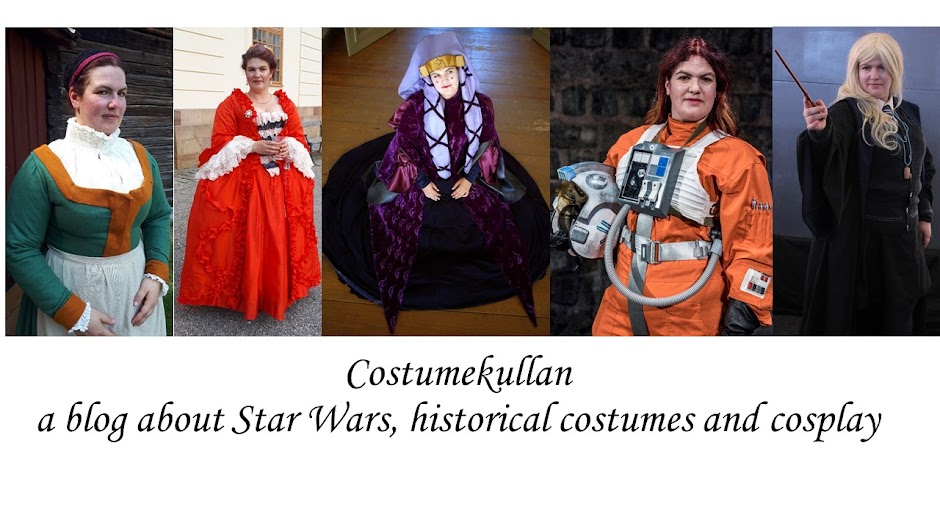I have spending time looking for tutorials and inspiration on the web and I would like to recommend the two that I've used the most: La Couture Parisienne and The Fashionable past
I was thinking for a long time if I should order a pattern or not, but decided not to. I didn't start from scratch though. I started off with my Reconstructing History 822, that I used for my navy anglaise. I was after the fitted lining.
I put the pattern pieces for the lining of RH822 on my muslin fabric and then opened p 34-34 of Patterns of Fashion, since that is a sack gown with all of my favorite elements, not the least that there is a seam between the bodice and skirt part in the front. I simply used the RH822 as a base and folded the pieces until they looked like in Patterns of Fashion. I sewed the muslin pieces together for a quick fitting and then used them as a pattern for the lining.
In the back of the lining I added ties so that I will be able to adjust the bodice. I had first planned to have lacing in the back, but this is a more simple solution from La Couture Parisienne. The vertical lines are boning channels, made from cotton tape and with a piece of plastic whalebone to stabilise the tied tapes.
For the back piece I used a full width of my main fabric. I cut out the shaped side seams, sleeve opening and shoulder seams.
I did my first test of just foldng the fabric to see if I was on the right way. As you can see I'm using my dress form. It is not the shape or size of me in a pair of 18th century stays, but it works as long as I'm just working with the back. I can't drape the front ont he dress form.
I attached the outer fabric directly on to the lining at the shoulder seams and the side seams.
When it was time to start draping I first marked the center on both the lining and the outer fabric, so that I could pleat one side at a time. The pleats are stacked box pleats. I could probably have stacked them more, now the bottom pleats are peaking out from under the top pleats.
The pleats are handstitched to the lining for the first ca 5 centimeters.









No comments:
Post a Comment